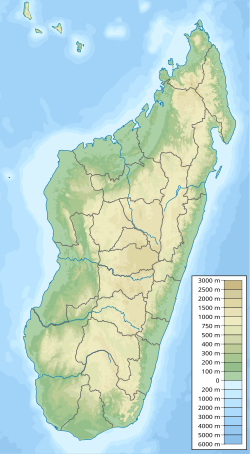Top Qs
Timeline
Chat
Perspective
Tsingy de Namoroka National Park
National park in Madagascar From Wikipedia, the free encyclopedia
Remove ads
Tsingy de Namoroka National Park, formerly known as Tsingy de Namoroka Strict Nature Reserve, is a national park located in the northwestern part of Madagascar in the Mahajanga Province, specifically, the Soalala District.
Remove ads
History
Namoroka Strict Nature Reserve was established in 1927[1] and became a special reserve in 1966. It forms a complex with the neighboring Baie de Baly National Park.[2]
Climate and geography
Located in the northwestern part of Madagascar about 50 km (31 mi) south of Soalala, Namoroka has a dry season lasting about seven months with a rainy season lasting only five months. The resulting precipitation is about 115 cm (45 in) per year, while the average temperature hovers around 25 °C (77 °F).
The park is known for its tsingy walls, caves, canyons, and natural swimming pools. The Marosakabe cave system is 113 km (70 mi) long and is the longest cave in Africa.[3]
Remove ads
Fauna
Like much of Madagascar, Namoroka is known for its abundant and diverse wildlife. Of its over 81 species of birds, 31 are endemic to Madagascar with 23 other species endemic to Madagascar and other neighboring islands.[4]
Namoroka is also home to over 30 species of reptiles, five types of frogs, and 16 mammals, including eight lemurs.[5] Specifically, Namoroka is home to the following lemur species:[5]
See also
References
External links
Wikiwand - on
Seamless Wikipedia browsing. On steroids.
Remove ads


